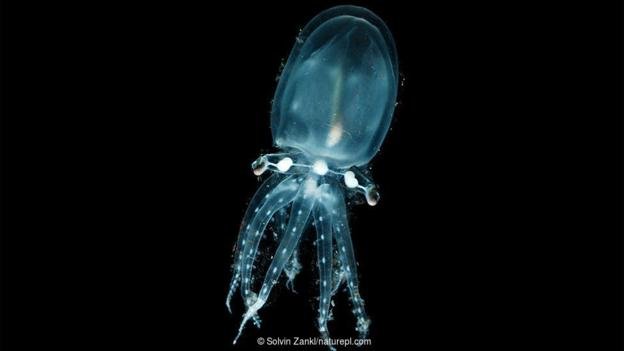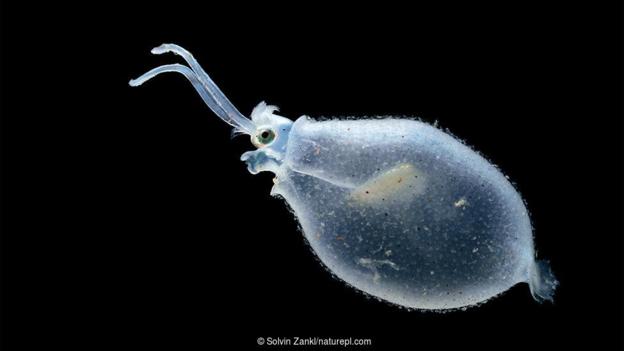These animals’ ability to control light renders them almost invisible
.jpg)
We’ve all heard of squid and octopus using pigments to blend in with their surroundings, but what about becoming completely invisible? To become actually see through, and appear as if you aren’t there, you need to either allow light to travel through you unimpeded, or bend light around you - so that none reflects back at an observer. It’s a tricky task, but some animals are almost there.
Glass octopus

In the ocean animals have two choices if they want to hide. Creatures that live in the deep ocean close to the seafloor can blend in with sand or rocks, or hide in coral. In the deep ocean it is often pitch black anyway and predators lack eyes, so being invisible is not necessary.
Animals that live close to the surface and want to hide can produce dazzling displays of light in a process known as bioluminescence, confusing predators below who think they are looking at dappled sunshine hitting the water’s surface. Animals that live in midwater though have neither of these options. This region is known as the pelagic zone, and it also happens to be where most invisible animals live.
Perhaps the easiest way of becoming invisible is by being transparent and letting light travel completely through you. In open oceans, which lack structures to hide behind, being transparent is a great way of hiding from all viewpoints and angles. It’s so popular in fact that transparency has independently evolved multiple times in completely unrelated animals.
One such animal, the glass octopus (Vitreledonella richardi) is so named because it is almost completely transparent. The gelatinous creature can grow up to 45cm (18in), if you include the tentacles. It lives 300-1000m below the surface in tropical and subtropical waters across the world, and is almost completely invisible to predators except for its digestive system, optic nerves and eyes.
But what’s the point in making your whole body transparent, if the eyes and guts are still visible? Even worse, these organs will cast shadows on the seafloor below, making them more visible to predators. Eyes need to absorb light to function, so it is not possible for them to be transparent. Guts betray their contents, so unless an animal feeds on transparent material, they will be visible. However the octopus, and all hosts of transparent creatures go to great lengths to disguise these opaque organs. The glass octopus (Vitreledonella richardi) for example has very elongated eyes which reduces its peripheral vision, but minimises the shadow it casts below - making it less likely to be detected by predators hunting from below. There is also some evidence that it orientates its body in such a way so as to minimise its shadow.
The glass octopus is not the only transparent animal to come up with an ingenious way of disguising its eyes. Many transparent molluscs camouflage their eyes with mirrors, as mirrors in the open ocean reflect only more ocean and so are invisible.
Cranchiidae or glass squid

The glass family of squid, of which there are about 60 species, are almost entirely see through. They live, again in the pelagic region of oceans around the world, between 200 and 1000m below sea level.
Although their bodies are entirely transparent, their large eyes are opaque, which is a problem as predators swimming below can easily see the shadow they cast. However the glass squid (Cranchiidae) uses a clever form of camouflage to hide them. It uses photophores - organs beneath its eyes - to produce light in a trick called counter-illumination. This light looks very similar to the sunlight filtering down from above, so it makes the squid completely invisible to predators swimming below it. However the light could make the squid very conspicuous to viewers looking at it from other angles. Rather than an invisibility cloak, the glowing light could act like a beacon drawing predators to it.
Researchers from the University of Pennsylvania found that the squid’s photophores are amazingly able to match the amount of light they produce to that coming in from every direction, creating a sort of omnidirectional invisibility cloak.
Source :
http://www.bbc.com/earth/story/20170622-the-animals-that-are-almost-invisible